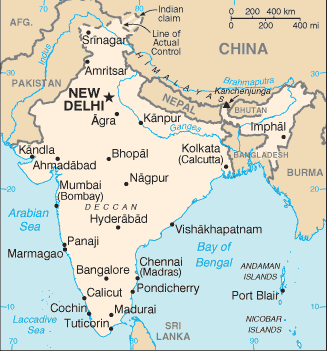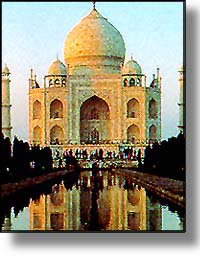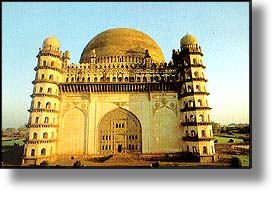

Introduction to Himachal Pradesh
Himachal Pradesh is a part of the Indian Himalayas. It has wide valleys imposing snow mountains, limpid lakes, rivers and gushing streams. After India became free in 1947, a number of princely hilly states were integrated into a single unit to be administered by the Government of India. Himachal Pradesh came into being as a state of the India Union on April 15, 1948, by integrating 31 big and small hill states of the region. In 1956, it was converted into a Union Territory. Subsequently, some more hill areas of the Punjab state were added to this Union Territory and it was made into a full-fledged state, the status that it continues to have now. Himachal Pradesh today is one of the most important tourist destinations in India. The high hills of Himalayas welcome the trekkers from all over the world.
Geography of Himachal Pradesh
Uttaranchal on the southeast, Punjab on the west, China on the east, Haryana on the southwest, and Jammu and Kashmir on North of Himachal Pradesh. It extends from the latitudes 30°22’40” North to 33°12’40” North and longitudes 75°45' 55" East to 79°04' 20" East. The entire region of Himachal Pradesh is hilly with the altitude ranging from 350 meters to 7000 meters above sea level. The altitude increases from west to east and from south to north. Geographically, Himachal Pradesh can be divided into three distinct regions, the Shivalik or outer Himalayas, middle Himalayas or inner Himalayas, and greater Himalayas or the alpine zone.
Brief History of Himachal Pradesh
Himachal Pradesh region was called 'Deva Bhoomi'. In early period, tribes like the Koilis, Halis, Dagis, Dhaugris, Dasa, Khasas, Kinnars and Kirats inhabited it. The Aryan influence in this area of India dates to the period before the Rigveda. Sankar Varma, the king of Kashmir exercised his influence over regions of Himachal Pradesh in about 883 AD. This region witnessed the invasion of Mahmud of Ghazni in 1009 AD, who during that period invaded and looted the wealth from the temples in the North of India. In about 1043 AD the Rajputs ruled over this territory. Known for its vibrant and exquisite natural scenery it received the royal patronage of the Mughal rulers who erected several works of art as an appreciation of this land. In 1773 AD the Rajputs under Sansar Chand possessed this region, till the attack by Maharaja Ranjit Singh in 1804 which crushed the Rajput power here. The Gurkhas who migrated from Nepal captured this area and devastated it. In the early 19th century the British exercised their influence and annexed the areas of Shimla after the Gurkha War of 1815-16. It became a centrally administered territory in 1948 with the integration of 31 hill states and received additional regions added to it in 1966.
Government of Himachal Pradesh
In 2003, Indian National Congress won the elections for the legislative assembly and Virbhadra Singh became the Chief Minister of the state.
Districts of Himachal Pradesh
Himachal Pradesh has 12 districts: Bilaspur, Chamba, Hamirpur, Kangra, Kinnaur, Kullu, Lahaul-Spiti, Mandi, Shimla, Sirmaur, Solan and Una.
Economy of Himachal Pradesh
The economy of Himachal Pradesh is mainly dependent on tourism and apples. The state also has some natural minerals. It has two large cement factories, which not only caters to the people of Himachal but also sell their output to other states. Another major part of the Himachal economy is hydro electricity due to the abundance of perennial rivers. In spite of considerable challenge, the state has good connectivity through road, rail and air. Besides having the highest road density among all the hill states of India, it also has three airports and two narrow gauge rail tracks. The rapid developments in infrastructure by government and promotion of modern techniques of cultivation among the farmers, suitable agricultural machinery and good breeds of cattle, sheep and poultry made Himachal as one of the classic examples of rapid transformation from the most backward part of the country to one of its most advanced states. Himachal, now ranks fourth in respect of per capita income among the states of the Indian Union.
Himachal Pradesh Travel Information
Himachal Pradesh is the land of eternal snow peaks abounds in exotic valleys, glorious green hill-slopes, mountains, streams and the hills of Himalayas welcome the tourists from all over the world. Himachal Pradesh is full of hill resorts, pilgrimages, adventure sports destinations, and wildlife that attracts a wide range of tourist traffic. Today, Himachal Pradesh is one of the most important tourist destinations in India. It also has excellent trekking. Main tourist complexes are Shimla, Palampur, Dharamsala, Kulu-Manali, Chamba-Dalhousie. Temple at Bhima Kali, Sarahan, Hatkoti, Jwalajee, Chamunda Devi, Chintpurni, Renuka and Rewalsar, Deoth Siddh and Naina Devi are major attractions for pilgrims. Tourist complexes are also being set up at Keylong, Kaza, Sangla, Shoja, Kalpa, Khadrala, Kharapathar, Chindi, Bharmour, Chansal and Naggar castle. Hang-gliding competitions are held in Kangra valley. Solang Nallah slopes are getting popular for winter sports. There is an art gallery in Naggar and museums in Chamba, Shimla and Dharamasala. The beautiful tourist resort of Khajjair in Chamba district has been christened as the Switzerland of Himachal Pradesh.
Rivers of Himachal Pradesh
The major river systems of the region are the Chenab, the Ravi, the Beas, the Sutlej and the Yamuna. These perennial rivers are fed by snow and rainfall and are protected by a fairly extensive cover of natural vegetation.
Education of Himachal Pradesh
Himachal Pradesh was the summer capital during British Raj. Hence the standard of educations in the state has reached to a considerable level. The state has many educational institutes for higher studies. H.P. University and National Institute of Technology are pioneer institutes of the state. There are many other Universities - Chaudhary Sarwan Kumar Himachal Pradesh Krishi Vishwavidyalaya, Palampur; Dr. Y.S. Parmar University of Horticulture & Forestry, Nauni; Jaypee University of Information Technology, Solan and National Institute of Technology, Hamirpur. The overall literacy rate, according to census in 2001, is 77.13% with male literacy rate at 86.02% and female literacy rate at 68.08%.
Food of Himachal Pradesh
There are not many specific varieties that one can get in Himachal Pradesh. A long-time relationship with Punjab and large-scale migration of Tibetans ensured the impact of the Tibetan and Punjabi cuisine on Himachal. Some of the unique Himachali cuisines include Nasasta (a sweetmeat) in the Kangra region; Indra (made of Urad dal), Baadi / Ghaunda, and Bada/Poldu in the Shimla region; apart from favorites all over the state like Pateer, Chouck, Bhagjery and chutneys of Til. Non-vegetarian food is quite popular too in Himachal Pradesh.
Arts & Culture of Himachal Pradesh
Himachal dance forms are varied and some are quite complicated. These dances are an inseparable part of tribal life, which reflects the great perseverance and good humour of the human beings in the face of poverty and death. No festivity here is completed without dancing. The dance forms like Dulshol, Dharveshi, Drodi, Dev Naritya, Rakshas Nritya, Dangi, Lasa, Nati and Nagas are danced all over the state and provide a welcome break in the monotony of life.
The Himachalis in general have a highly developed sense of art, which is expressed in their objects of daily use. Their metal ware including attractive utensils, ritualistic vessels, idols and silver jewellery; the unglazed earthenware of Kangra; embroidered shawls and other garments which portray both classical and simple folk styles and designs; and traditional jewellery for almost all conceivable uses, are some of their popular crafts. Weaving of wool is a major cottage industry in itself.
Music& Dance of Himachal Pradesh
Most of the songs require no instrumental accompaniment. The themes are usually common ones like human love and separation of lovers. Some songs are about rituals. Chhinj, Laman, Jhoori, Gangi, Mohana and Tappe are love songs. Dholru is a seasonal song. Bare-Haren are ballads about warriors, Soohadiyan are songs sung at Childbirth. Losi and Pakkahad and Suhaag songs are all family songs, Karak are songs of praise in honour of the deities and Alhaini is a song of mourning. All these songs follow a specific style of singing and the geographical facts have a deep effect on these.
Costumes of Himachal Pradesh
The highlanders of Lahaul-Spiti and Kinnaur weave dresses from it for special occasions such as festivals and weddings. The wool products are made in either the Byangi wool. Sari is the most common garment that Himachali women wear. Traditional dresses like Kameez, Kurta, and Salwar in distinctive Himachali style are still popular. Women like to put on a coat or waistcoat during chilly winter days.





 Set apart from the rest of Asia by the supreme continental wall of the Himalayas, the Indian subcontinent touches three large bodies of water and is immediately recognizable on any world map. It is the huge, terrestrial beak between Africa and Indonesia. This thick, roughly triangular peninsula defines the Bay of Bengal to the east, the Arabian sea to the west, and the India Ocean to the south.
Set apart from the rest of Asia by the supreme continental wall of the Himalayas, the Indian subcontinent touches three large bodies of water and is immediately recognizable on any world map. It is the huge, terrestrial beak between Africa and Indonesia. This thick, roughly triangular peninsula defines the Bay of Bengal to the east, the Arabian sea to the west, and the India Ocean to the south. India can be organized along the compass points. North India, shaped like a throat and two lungs, is the country's largest region. It begins with the panhandle of Jammu and Kashmir, a dynamic area with terrain varying from arid mountains in the far north to the lake country and forests near Sringar and Jammu. Falling south along the Indus river valley, the North becomes flatter and more hospitable, widening into the fertile plains of Punjab to the west and the Himalayan foothills of Uttar Pradesh and the Ganges river valley to the East. Cramped between these two states is the capital city, Delhi. The southwestern extremity of the North is the large state of Rajastan, whose principal features are the
India can be organized along the compass points. North India, shaped like a throat and two lungs, is the country's largest region. It begins with the panhandle of Jammu and Kashmir, a dynamic area with terrain varying from arid mountains in the far north to the lake country and forests near Sringar and Jammu. Falling south along the Indus river valley, the North becomes flatter and more hospitable, widening into the fertile plains of Punjab to the west and the Himalayan foothills of Uttar Pradesh and the Ganges river valley to the East. Cramped between these two states is the capital city, Delhi. The southwestern extremity of the North is the large state of Rajastan, whose principal features are the  With nearly 1 billion citizens, India is the second most populous nation in the world. It is impossible to speak of any one Indian culture, although there are deep cultural continuities that tie its people together. English is the major language of trade and politics, but there are fourteen official languages in all. There are twenty-four languages that are spoken by a million people or more, and countless other dialects. India has seven major religions and many minor ones, six main ethnic groups, and countless holidays.
With nearly 1 billion citizens, India is the second most populous nation in the world. It is impossible to speak of any one Indian culture, although there are deep cultural continuities that tie its people together. English is the major language of trade and politics, but there are fourteen official languages in all. There are twenty-four languages that are spoken by a million people or more, and countless other dialects. India has seven major religions and many minor ones, six main ethnic groups, and countless holidays.